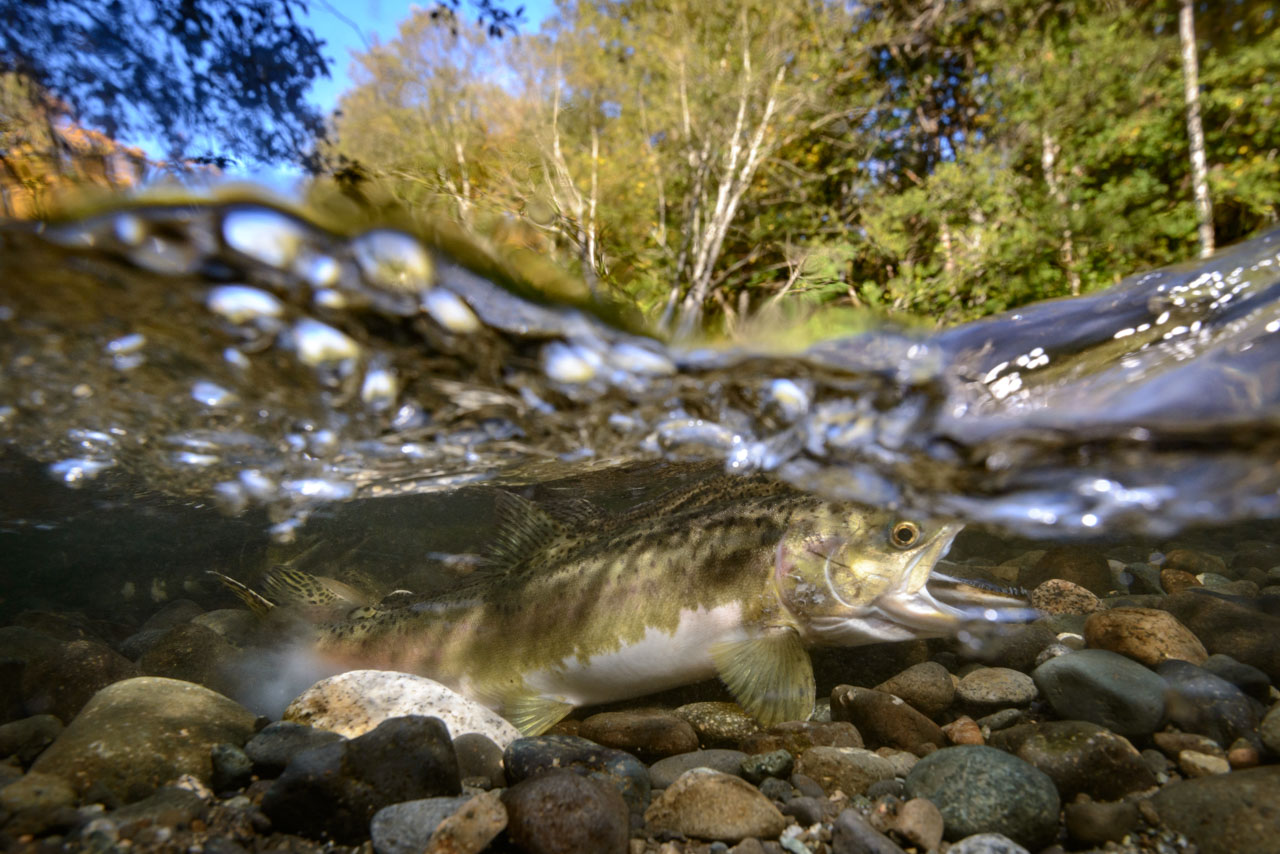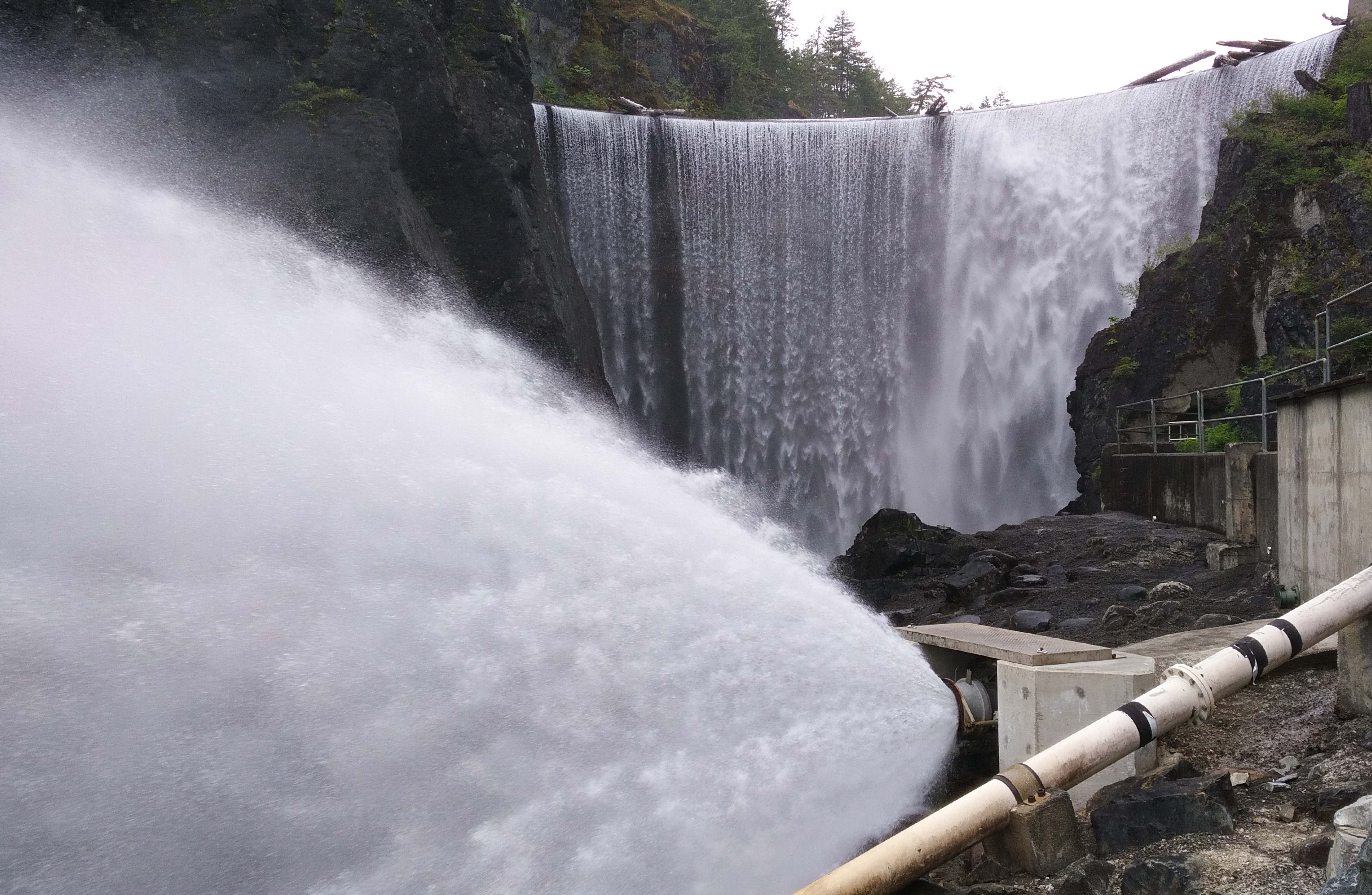Water Conservation
Team WaterSmart
The City of Nanaimo partner's with other water suppliers in the region as part of the Drinking Water and Watershed Protection (DWWP) program. Learn how you can make a difference, the Team WaterSmart webpage shares information and resources for conservation, watershed education, as well as upcoming workshops and public events about water-saving initiatives.
Why Conserve Water?
We use on average 30 million litres of water per day in the winter months and 50 million litres of water per day during the summer. From the 2024 Annual Water Quality Report, the City used 61.4 million litres per day during peak summer flows in 2024. The average daily flow was 36 ML/day, and this annual average daily flow decreased slightly (-3.5%) compared to the previous year, 2023.
Over the past decade, Nanaimo's water consumption has declined almost 20%, and remains lower than both provincial and national rates. Council set an ambitious target for further reduction of 10% per decade. Reducing consumption helps the environment and helps delay expensive upgrades to infrastructure.
The daily consumption in 2025, up to November 26, 2025, is shown in the graph below, and is currently trending at about average.
For more information on monitoring and water quality explore the Reports page.
Living Water Smart BC
Our efforts directly support the Provincial Living Water Smart initiative by:
- Watershed protection measures, in conjunction with the forestry companies that own the watershed
- Weather station maintenance to track rainfall trends in the City and in the watershed, in support of watershed modelling
- Measuring water supplied to the City via meters at major points in the supply system
- Expanded block rate pricing structure
- Full cost pricing (user rates reflect the true long-term construction and operation costs)
- Water Supply Strategy (2022) recognizes that water is a shared resource for drinking water, others in the region and as a fisheries necessity. The strategy sets the 40 year vision for the City's drinking water and was developed in parallel with the City's Official Community Plan (OCP) providing direction for growth and change in the community over a 25 year planning horizon. The Water Supply Strategy was developed as an update to the Water Supply Strategic Plan (2007).
- Nanaimo's Water Conservation Strategy, includes existing efforts to conserve water and future planned initiatives to reduce consumption further to ensure water is available for our needs, as well as for the ecosystems that we share this resource with.
- Participation with industry, First Nations, federal government (Ministry of Environment and Department of Fisheries and Oceans), provincial government (Ministry of Forests, Lands and Natural Resource Operations in the Nanaimo River Watershed Management Plan), as well as other initiatives to augment the flow of water during dry periods (e.g. Westwood Lake, Millstone River)
Fish Protection
The City owns and manages significant water infrastructure within the Nanaimo River Watershed, including South Fork Dam and Jump Lake Dam. The majority of stored water in these reservoirs is for fisheries purposes. For decades the City has
been providing make-up flow for low summer flows in the Nanaimo River, as well as pulse releases during early fall for salmon spawning. Along with the water released for consumption and domestic use, this additional water creates better spawning
and migration conditions for the fish in the river. In accordance with the recommendations in the Nanaimo River Water Management Plan, the City works cooperatively with federal and provincial fisheries departments to manage the additional fisheries
flows.


Last updated: November 27, 2025
Give feedback on accessibility. Submit your feedback through our online accessibility feedback form. Help us understand barriers people face when accessing City services.
You can attach files to help explain the barrier you faced in the form, like: a video, voice recording or photos. If American Sign Language (ASL) is the best way for you to communicate, upload a video of yourself using ASL into the form.
Please include: what you were trying to access, where the barrier happened, what the barrier was and any recommendations you might have.
Help us improve our website
Important Information About Privacy
Information collected on this form is done so under the general authority of the Community Charter and Freedom of Information and Privacy Protection Act (FOIPPA), and is protected in accordance with FOIPPA. Personal information will only be used by authorized staff to fulfill the purpose for which it was originally collected, or for a use consistent with that purpose.
For further information regarding the collection, use, or disclosure of personal information, please contact the Legislative Services Office at 250-755-4405 or at foi@nanaimo.ca
-
Parks, Rec & Culture
- Recreation Facilities & Schedules
- Parks & Trails
- Activity Guide
- Events
- Register for a Program
- Drop-In Schedules
- Public Art
- Culture
- Poetry
-
City Services
- Garbage & Recycling
- Home & Property
- Water & Sewage
- Online Services
- Cemetery Services
- City Services Directory
-
Property & Development
- Urban Forestry
-
Building Permits
- Online Building Permit Application
- Building Permit Revision
-
Application for a Residential Building Permit
- Access (driveway) Permit
- Accessory Building Permit
- Alteration Permit
- Building Envelope Repair
- Carriage House
- Demolition Permit
- Fence or Retaining Wall Permit
- Geotechnical Reports
- Locate Permit
- New Construction Permit
- Plumbing or Services Permit
- Secondary Suite Permit
- Special Inspection Permit
- Swimming Pool Permit
- Woodstove Installation Info
- Green Home Initiatives
- Building Three/Four Dwelling Units
-
Apply for a Commercial Building Permit
- Access (driveway) Permit
- Commercial Alteration Permit
- Building Envelope Repair Permit
- Demolition Permit
- Fence or Retaining Wall Permit
- Geotechnical Reports
- Leasehold Improvement
- Locate Permit
- New Commercial Construction Permit
- Occupant Load Permit
- Signs Permit
- Special Inspection Permit
- Sprinkler Requirements
- Fees and Bonding
- Commercial Plumbing Permit
- Certified Professional Program
- Bylaws for Building
- Forms and Guidelines
- Book a Building Inspection
- Report Illegal Construction
- Request Building Plans
- Building Permit Statistics
- Permit Fee Calculator
- Building News and Alerts
- Fast Track Building Permits
- Development Applications
- What's Building in my Neighbourhood
- Development Activity Map
- Community Planning
- NanaimoMap
- Rebates
- Engineering Survey
- Land Use Bylaws
- Soil Removal and Depositing
- Heritage Buildings
- Sustainability
- Transportation & Mobility
-
Your Government
- Get Involved
- Government Services Guide
- News & Events
-
City Council
- Advocacy
- Contact Mayor & Council
- Council Meetings
-
Boards & Committees
- Advisory Committee on Accessibility and Inclusiveness
- Board of Variance
- Design Advisory Panel
- Finance and Audit Committee
- Governance and Priorities Committee
- Mayor's Leaders' Table
- Parcel Tax Roll Review Panel
- Special District 68 Sports Field and Recreation Committee
- Public Safety Committee
- Understanding Council Committee Structures
- Council Policies
- Mayor's Office
- Council Initiatives
- Proclamations
- Bastion Lighting Requests
- Alternative Approval Process
- Budget & Finance
- Records, Information & Privacy
- Elections
- Contacts
- Careers
- Maps & Data
- Projects
- Tourism Nanaimo
- Grants
- Awards
- Accessibility & Inclusion
-
Doing Business
- Economic Development
- Doing Business with the City
- Business Licences
- Filming in Nanaimo
- City Owned Property
- Encroachments onto City Property
- Liquor Licences
- Cannabis Retail
- Business Improvement Areas
- Procurement Services
- About Nanaimo
- Green Initiatives
-
Public Safety
- Public Safety Contacts
- Nanaimo Fire Rescue
- Emergency Management
- Police & Crime Prevention
- City Bylaws
- Community Safety and Wellbeing
- Emergency Services

